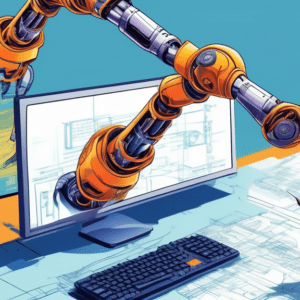TUAW Returns With Plagiarized Design and AI-Written Content
The tech world was taken by surprise today with the unexpected resurrection of TUAW, a once-popular Apple news and reviews site. However, this blast from the past has been met with a wave of controversy. Accusations of plagiarism and the use of AI-generated content have cast a shadow over the site’s return, raising questions about journalistic integrity and the ethics of content creation in the age of artificial intelligence.
A Familiar Face with a Troubled Present
For many years, TUAW (The Unofficial Apple Weblog) held a prominent position in the Apple blogosphere. Founded in 2004, it quickly gained a loyal following for its in-depth coverage of Apple products, insightful analysis, and active community. However, the site went dark in 2015, leaving a void in the Apple news landscape.
Fast forward to today, and TUAW is back online. While the prospect of its return initially sparked excitement among Apple enthusiasts, that enthusiasm quickly waned as details about the relaunch emerged.
Design Under Fire: A Case of Déjà Vu?
One of the most glaring issues that immediately caught the attention of internet sleuths is the design of the new TUAW website. Users were quick to point out striking similarities between the resurrected TUAW and the layout, color scheme, and even typography of another popular tech blog, 9to5Mac. The resemblance is so uncanny that it’s difficult to dismiss as mere coincidence, leading many to accuse the new TUAW of blatant plagiarism.
This accusation carries significant weight, especially in the realm of online publishing where originality and unique branding are paramount. The lack of originality in TUAW’s design not only raises ethical concerns but also casts doubt on the site’s credibility and ability to produce original content.
The Rise of the Machines: AI Content Sparks Debate
Adding fuel to the fire, several reports have surfaced alleging that the content populating the new TUAW is not written by human authors but generated using artificial intelligence (AI). While AI writing tools have become increasingly sophisticated in recent years, their use in journalism, particularly without transparency, is a contentious issue.
Critics argue that relying on AI-generated content compromises the quality and authenticity of journalism. They point to the potential for inaccuracies, biases inherent in AI models, and the lack of human oversight as significant drawbacks. Moreover, the use of AI to mimic human writing raises ethical concerns about transparency and the potential for deception.
The Ethical Implications: A Broader Conversation
The controversies surrounding TUAW’s relaunch highlight a growing concern in the digital age: the blurring of lines between human creativity and artificial intelligence. As AI technology advances, its impact on creative industries, including journalism, will undoubtedly intensify.
The debate surrounding AI-generated content centers on several key ethical considerations:
1. Transparency and Disclosure:
The use of AI in content creation should be transparent. Readers have the right to know whether the content they are consuming was written by a human or generated by a machine. Without clear disclosure, the use of AI can be perceived as deceptive and erode trust in the information source.
2. Quality and Accuracy:
While AI writing tools have improved, they can still produce inaccurate or nonsensical content. Human oversight and fact-checking remain essential to ensure accuracy and uphold journalistic standards.
3. Bias and Fairness:
AI models are trained on massive datasets, which can contain biases present in the data itself. This can result in AI-generated content that perpetuates existing societal biases. It is crucial to address these biases and ensure that AI is used responsibly and ethically in content creation.
4. The Value of Human Creativity:
Journalism, at its core, is about storytelling, critical thinking, and providing unique insights. While AI can assist with certain tasks, it’s essential to recognize the irreplaceable value of human creativity, empathy, and experience in crafting compelling and ethical journalism.
The Road Ahead: Navigating the Evolving Media Landscape
The controversies surrounding TUAW’s return serve as a cautionary tale, highlighting the ethical complexities of content creation in the digital age. As AI tools become more accessible, it is imperative to establish clear guidelines and ethical frameworks for their use in journalism and content creation.
Transparency, accountability, and a commitment to journalistic integrity are paramount. The focus should be on leveraging AI as a tool to augment human creativity and enhance storytelling, not to replace it entirely. By prioritizing ethical considerations and embracing human ingenuity, we can navigate the evolving media landscape and ensure that the future of content creation is both innovative and responsible.
